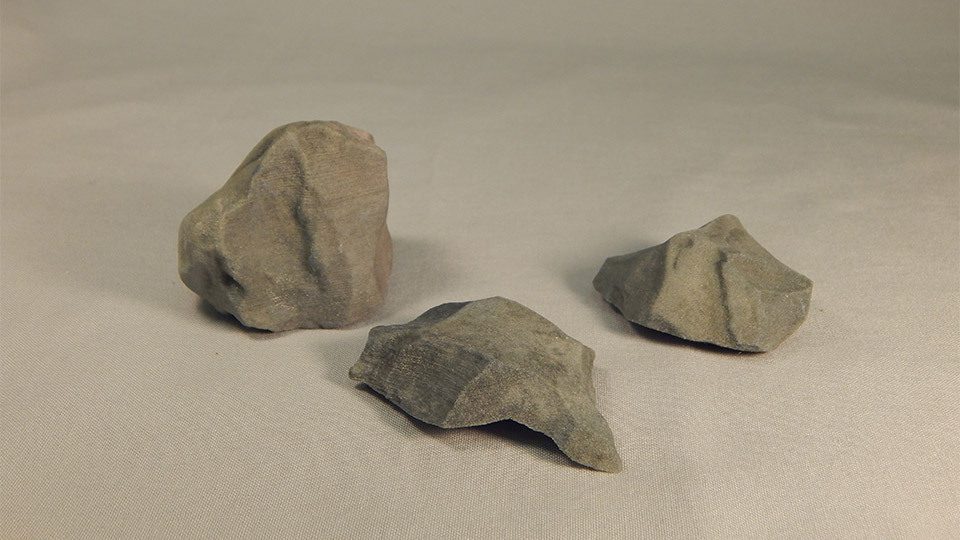Working in collaboration with HELIX Environmental Planning, PaleoWest has used photogrammetry to create a set of realistic 3D models of artifacts from an archaeological site in San Diego County.
Included amongst the modeled artifacts were metates, metate fragments, manos, gaming stones, discoidals, a drill, an olivella shell, cores, and flakes.
Each artifact was photographed several hundred times from multiple angles in a portable studio–with these photographs serving as the basis of the model. The model creation process saw our team harnessing a set of photogrammetry and 3D modeling applications to build a colored hollow model of each artifact, with a small hole cut on the side, and a second model to cap the hole. Models were highly detailed–exhibiting physical texturing to show pecking scars, rough areas, polish, and other surface treatments–making the final printed objects life-like.
The high-definition 3D powder printer applied color to each model’s outer shell for photo-realistic color and patterning. Each artifact was printed in a plaster-like composite material, providing a hard, realistic feel. Following their completion, our team at PaleoWest stepped in to fill the printed models with sand to achieve an accurate representation of each artifact’s weight and then closed the hole.
As a result of PaleoWest’s partnership with HELIX Environmental Planning, the models represent an extraordinarily accurate and realistic replica of the artifacts originally recovered from a site in San Diego County. These 3D artifacts will be used for display and public outreach purposes, with the originals now safely repatriated to the Native American Community.
PaleoWest is privileged to participate in creative mitigation projects across the United States. Working together with partners such as HELIX Environmental Planning, we will continue to find new ways of employing state-of-the-art technologies that can help protect archaeological sites and cultural resources.

